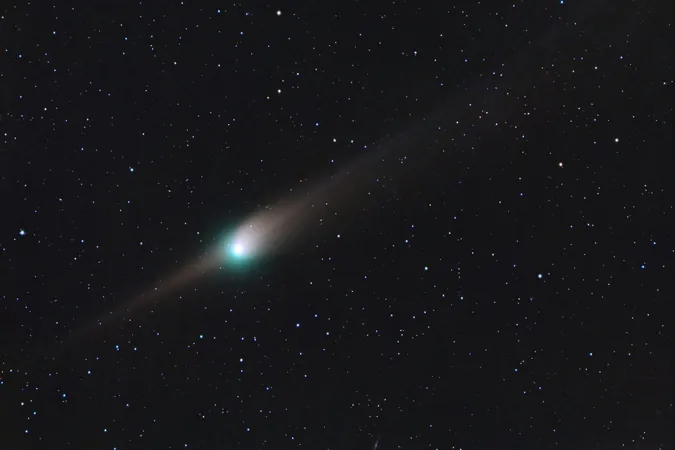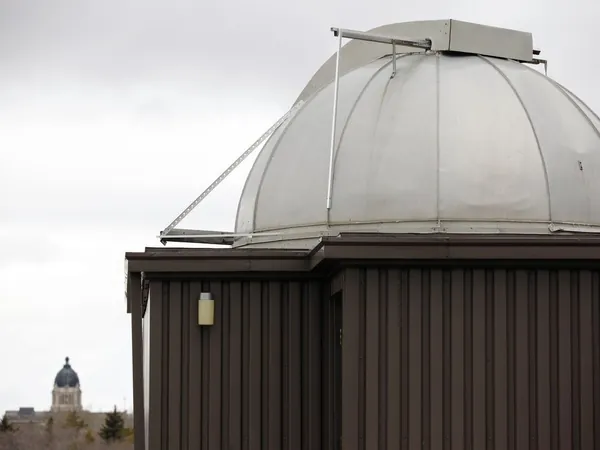
Amazing News: The Year’s Most Dazzling Comet Could Illuminate Our Skies Next Week!
2025-01-06
Author: Michael
Amazing News: The Year’s Most Dazzling Comet Could Illuminate Our Skies Next Week!
Get ready, sky-watchers! The most brilliant comet of the year is expected to make its spectacular appearance very soon. Dubbed Comet C/2024 G3 (ATLAS), this celestial marvel was first detected by the Asteroid Terrestrial-impact Last Alert System (ATLAS) telescope stationed in Chile.
But don’t be alarmed by the name—this comet isn’t on a collision course with Earth! The real suspense lies in whether it will survive a startling close encounter with the Sun on January 13.
Comets are fascinating chunks of ice and dust that become visually stunning as they approach the Sun. The immense heat causes them to release gas and dust, forming those breathtaking tails that capture imaginations worldwide. However, this spectacle comes with risks; the Sun’s intense heat can lead some comets to disintegrate, vanishing before they can unveil their beauty.
For Comet C/2024 G3 (ATLAS), the burning question remains: will it endure its sunlit journey? If it does, it is predicted to shine at a remarkable magnitude of -5.8 during its closest approach—making it brighter than any star in our night sky, except, of course, for the Sun itself (which dazzles at about -26.74 magnitude).
This comet should not be confused with its stellar sibling, C/2023 A3 (Tsuchinshan-ATLAS), which amazed viewers last year with a striking anti-tail effect caused by its trajectory relative to Earth.
If you’re eager to catch a glimpse, your best chance will come from the Southern Hemisphere. Experts recommend looking for Comet ATLAS near the Sun right after sunset. Just be warned—the comet will gradually dim as it rises higher into the nighttime sky. During its closest approach, it will be shrouded in the Sun’s glare, so those hoping to see it should wait until around January 16 or later for improved visibility.
Sadly, viewing opportunities from the Northern Hemisphere may be quite limited due to the comet’s low position in the sky and its closeness to the Sun during its brightest phase. However, those in southern regions should get ready for a spectacular celestial show!
Mark your calendars and stay tuned, because if Comet C/2024 G3 (ATLAS) holds up its end of the cosmic bargain, it could provide stargazers with an unforgettable visual treat!









 Brasil (PT)
Brasil (PT)
 Canada (EN)
Canada (EN)
 Chile (ES)
Chile (ES)
 Česko (CS)
Česko (CS)
 대한민국 (KO)
대한민국 (KO)
 España (ES)
España (ES)
 France (FR)
France (FR)
 Hong Kong (EN)
Hong Kong (EN)
 Italia (IT)
Italia (IT)
 日本 (JA)
日本 (JA)
 Magyarország (HU)
Magyarország (HU)
 Norge (NO)
Norge (NO)
 Polska (PL)
Polska (PL)
 Schweiz (DE)
Schweiz (DE)
 Singapore (EN)
Singapore (EN)
 Sverige (SV)
Sverige (SV)
 Suomi (FI)
Suomi (FI)
 Türkiye (TR)
Türkiye (TR)
 الإمارات العربية المتحدة (AR)
الإمارات العربية المتحدة (AR)